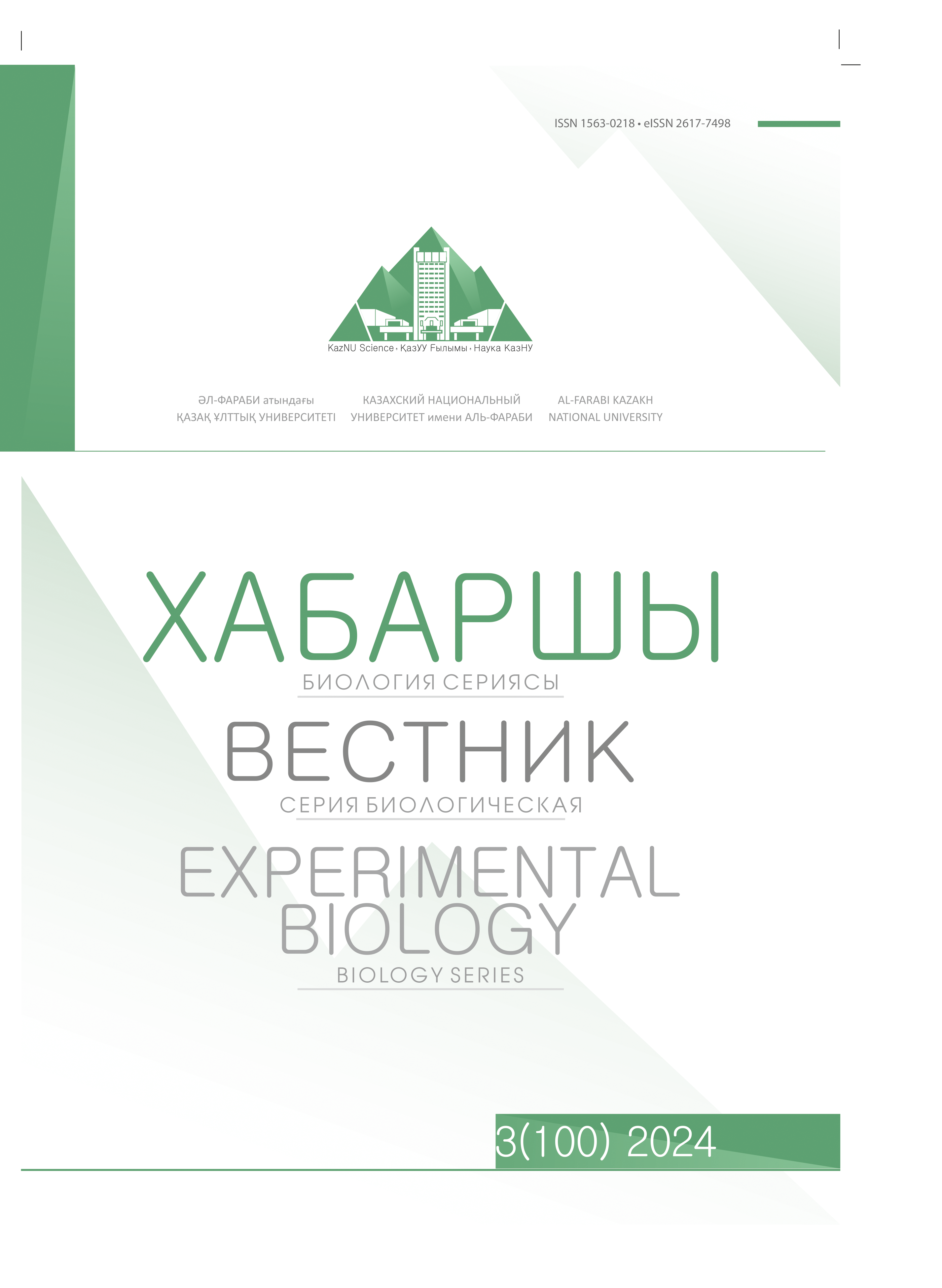FEATURES OF KEEPING SAIGA YOUNG IN THE NURSERY
DOI:
https://doi.org/10.26577/bb.2024.v100.i3.07Keywords:
saiga, population, aviary, poaching, introduction, gene pool, genetic bank, zoo, conditioned reflex, natural instinctAbstract
Saiga (Saiga tatarica tatarica L., 1766) is a highly ancient species, a migratory herd endemic to the arid steppes of Eurasia. Unfortunately, like many other species, saigas have not been immune to the threats of wild hunting, poaching, anthropogenic disturbances, and habitat loss. Among the ungulates in Kazakhstan, saiga antelopes, specifically Saiga tatarica tatarica L., 1766, hold the largest population.
Drawing from global experience, it`s evident that establishing breeding programs for the last remaining individuals of endangered species in specialized enclosures and zoos is crucial for preserving their genetic diversity. Thus, there is a pressing need to breed saigas in controlled environments, alongside comprehensive programs aimed at conserving their gene pool and potentially reintroducing selected groups into both existing and previously extinct natural habitats, which have dwindled dangerously over the past century.
This article presents experiments conducted worldwide, including in Kazakhstan, on maintaining saigas in artificial conditions. It synthesizes information from literature, the authors` research, and their direct involvement in managing saigas at a newly established nursery in the Ulytau region since 2022. The article delineates the entire process, from removing saiga calves from their natural habitat shortly after birth to their care and maintenance in specialized enclosures. It delves into various aspects of their grazing behavior and the challenges, injuries, and illnesses they encounter before reaching adulthood.
Furthermore, the article scrutinizes the experience of artificially feeding saiga calves with milk substitutes, affirming the feasibility of successfully rearing these animals in nurseries under specific conditions. Additionally, it presents findings from studies on saiga behavior in artificial environments, shedding light on their adaptability and needs in captivity.












